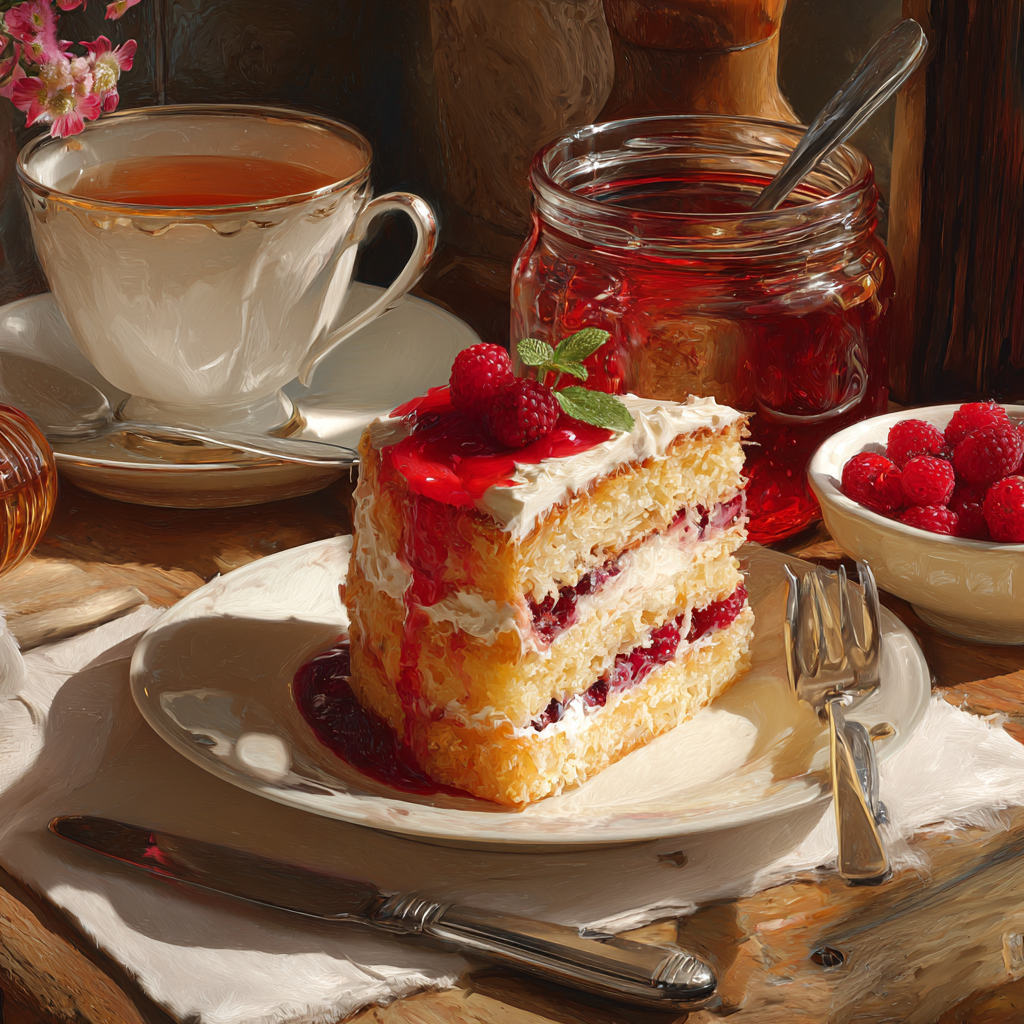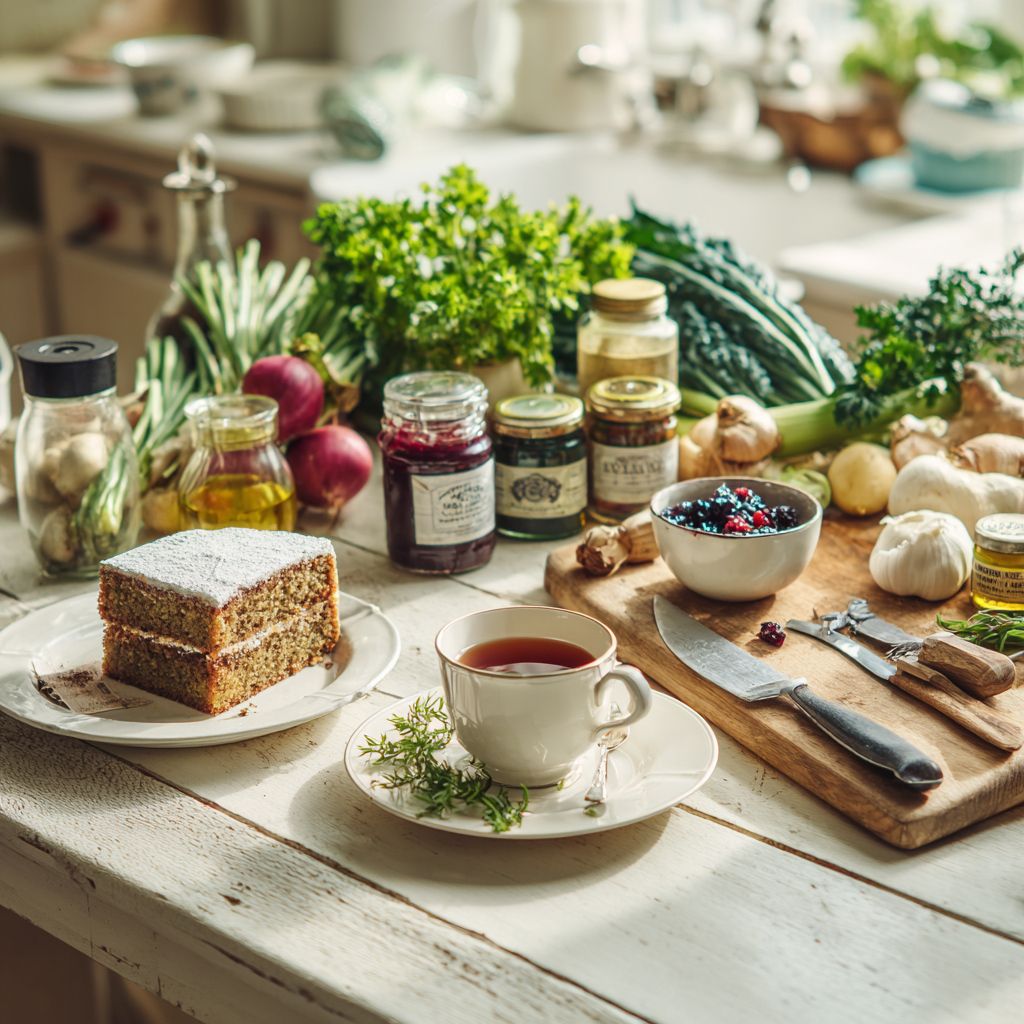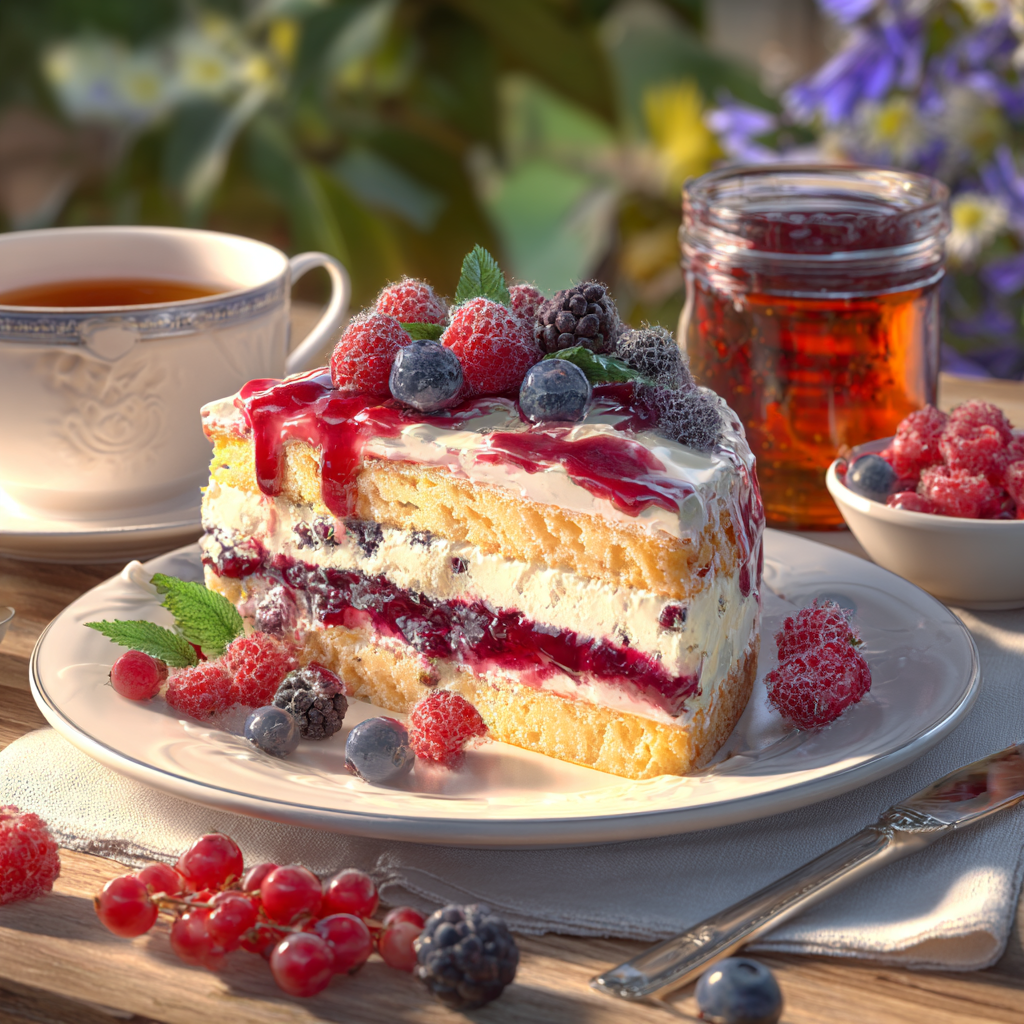Introduction
I still remember the first time I saw a Lambeth cake. It was at a local bakery, sitting proudly in the display case like a piece of art. The intricate designs and delicate details stopped me in my tracks. As someone who loves baking, I couldn’t help but feel a mix of awe and curiosity. How could anyone create something so beautiful with just icing and a piping bag?
That’s when my journey into the world of Lambeth cakes began. These cakes are more than just desserts—they’re masterpieces that combine skill, patience, and creativity. If you’ve ever wondered what makes a Lambeth style cake special, or how to achieve those stunning decorations yourself, you’re in the right place. This guide will walk you through everything from the basics to advanced techniques like how to pipe swags on cakes, how to pipe scrolls on the side of a cake, and even how to pipe pearls on a cake.
But first, let’s talk about why the term “Lambeth cake” is so significant. Named after Joseph Lambeth, a renowned cake decorator from the early 20th century, this style has become a cornerstone of cake decorating history. His famous Lambeth piping book remains a go-to resource for bakers eager to learn his methods. Whether you’re a beginner or an experienced decorator, understanding this technique opens up endless possibilities for creating show-stopping cakes.
What is a Lambeth Style Cake?
So, what exactly is a Lambeth style cake? At its core, it’s a cake decorated using a specific piping technique that creates elaborate, ornamental designs. Think of it as the ultimate way to add vintage charm to your creations. From floral patterns to intricate scrollwork, these cakes are all about precision and detail.
The magic happens with the right tools and recipes. For example, many bakers rely on a trusted Lambeth icing recipe to get the perfect consistency for their designs. The icing needs to be firm enough to hold its shape but soft enough to flow smoothly through a piping bag. Once you have the right ingredients, the fun begins—transforming a plain cake into something extraordinary.
Why do they call them Lambeth cakes? The name comes from Joseph Lambeth himself, whose innovative approach revolutionized cake decorating. In the 1930s, he introduced a method that combined royal icing with meticulous piping skills. His techniques were so groundbreaking that they continue to inspire bakers today. Even though trends come and go, the timeless appeal of a Lambeth style cake never fades.
The Allure of David Cakes UK and Cake Geek Inspiration
While Joseph Lambeth laid the foundation, modern bakers are keeping the tradition alive. One standout example is David Cakes UK, known for their breathtaking designs that pay homage to classic styles while adding a contemporary twist. Their work proves that Lambeth piping isn’t just a thing of the past—it’s very much relevant today.
If you’re looking for inspiration, communities like Cake Geek are gold mines of knowledge. These platforms bring together passionate decorators who share tips, tutorials, and encouragement. Whether you’re trying to perfect scroll piping on cakes or mastering the art of symmetry, there’s always something new to learn.
Here’s why this matters: Decorating a Lambeth cake isn’t just about following instructions. It’s about expressing your creativity and pushing your skills to the next level. With the right resources and practice, you can create designs that wow your friends and family—or even clients if you’re running a business.
To give you a clearer picture, here’s a quick breakdown of some key terms:
- Lambeth Cake: A cake decorated using the Lambeth piping technique, known for its intricate designs.
- Lambeth Piping Book: A classic guide written by Joseph Lambeth, offering step-by-step instructions for his iconic methods.
- Lambeth Icing Recipe: A specialized icing formula designed for piping detailed decorations.
By now, you might be wondering how to get started. Don’t worry—this guide will cover not only the basics but also advanced techniques like creating flowing swags, elegant scrolls, and perfectly rounded pearls. Each step builds on the last, helping you grow your confidence and skills one layer at a time.
Mastering Lambeth Piping Techniques
Alright, let’s dive into the fun part—the actual piping! If you’ve ever wondered how those flawless swags, intricate scrolls, and perfectly rounded pearls come to life on a Lambeth cake, you’re about to find out. Trust me, it’s not as intimidating as it looks. With a bit of practice (and maybe a few trial runs), you’ll be creating designs that could rival even the fanciest bakery creations. By the way, if you’re curious about something simpler yet equally adorable, check out this adorable bento cake idea. But for now, let’s focus on mastering these classic techniques.
How to Pipe Swags on Cakes
Swags are one of those details that instantly elevate a cake from “nice” to “wow.” They look like draped fabric or ribbons cascading down the sides, and they’re surprisingly easier to create than they seem. Here’s my go-to method:
- Start with the right consistency: Whether you’re using buttercream or royal icing, make sure it holds its shape but isn’t too stiff. Think of it as soft enough to glide but firm enough to stay put. If you’re unsure, test it on a plate first.
- Use a round piping tip: A medium-sized round tip works best for beginners. For more advanced designs, try a petal tip for added flair.
- Create anchor points: Before piping the full swag, mark where the ends will sit. This gives you a guide to follow so your lines don’t droop or sag.
- Pipe gently: Hold the bag at a slight angle and apply steady pressure. Start from one anchor point, let the icing flow naturally in an arc, and finish at the other anchor point. Practice makes perfect here!
Funny enough, I once spent an entire afternoon practicing swags on parchment paper before trying them on an actual cake. It felt silly at the time, but boy did it pay off later. Now, whenever someone asks me how to pipe swags on cakes, I tell them to embrace the process—it’s all about finding your rhythm.
How to Pipe Scrolls on the Side of a Cake
Scrollwork is another hallmark of Lambeth style cakes. These curvy, flowing patterns give cakes a timeless elegance that never goes out of style. To get started, here’s what I recommend:
- Choose the right tools: A small round piping tip is ideal for fine scrollwork. You might also want a coupler so you can switch tips easily.
- Practice freehand drawing: Grab a piece of paper and sketch some scrolls by hand. This helps train your hand-eye coordination before tackling the real thing.
- Turn the cake as you pipe: Instead of twisting your wrist awkwardly, rotate the turntable (or plate) while piping. Your arm will thank you!
- Keep it light and fluid: The key to beautiful scrolls is maintaining consistent pressure without overthinking it. Let the icing do the work.
Here’s the thing: Scroll piping on cakes takes patience, especially if you’re aiming for symmetry. Don’t stress if your first attempt looks more like squiggles than elegant curves. One trick I learned is to keep a damp cloth nearby—if you mess up, you can wipe it off and start again. And hey, if you need inspiration, take a peek at this gorgeous vintage cake design. It’s packed with ideas for incorporating scrolls seamlessly.
How to Pipe Pearls on a Cake
Ah, pearls—they’re the cherry on top of any Lambeth cake. Literally! These tiny, spherical details add a touch of sophistication that’s hard to beat. Here’s how to achieve them:
First, grab a small round piping tip—size #2 or #3 usually works well. Fill your piping bag with stiff royal icing or buttercream. Then, hold the bag perpendicular to the surface and squeeze gently until a small ball forms. Stop squeezing, then pull away quickly to leave a clean dot. Sounds simple, right? Well, it is… once you get the hang of it.
Now, here’s where things can get tricky. Sometimes, the pearls end up uneven or flat instead of perfectly round. Don’t panic—it happens to everyone. To fix this, dip a toothpick in water and gently reshape the pearl. Another pro tip? Chill the cake briefly after piping to set the pearls firmly in place.
I remember the first time I tried piping pearls—I ended up with blobs instead of balls. My solution? Practice on wax paper until I got the motion just right. Oh, and speaking of practice, if you’re looking for a playful project to experiment with these techniques, why not try decorating a cotton candy cake? Its whimsical theme is perfect for testing out new skills.
Comparing Styles: Lambeth Cake vs Vintage Cake
So, what’s the deal with Lambeth cakes versus vintage cakes? Are they the same thing? Not quite. While both styles share similarities, there are subtle differences worth noting. Understanding these distinctions can help you decide which approach suits your next baking adventure.
Let’s break it down:
Design Elements: Lambeth cakes are known for their heavy use of intricate piping techniques, like swags, scrolls, and pearls. Every detail is meticulously crafted to create a sense of depth and texture. On the flip side, vintage cakes often incorporate softer, more romantic elements like lace patterns, floral accents, and pastel colors. They lean toward nostalgia, evoking memories of tea parties and garden weddings.
Trends: Funny enough, Lambeth cakes have remained relatively consistent over the years. Their timeless appeal lies in their precision and artistry. Meanwhile, vintage cakes tend to evolve with modern trends. For example, today’s versions might feature metallic accents or minimalist designs alongside traditional touches.
Techniques: Both styles rely heavily on piping, but Lambeth cakes demand a higher level of technical skill. Think of it as the difference between sketching a quick doodle and painting a masterpiece. If you’re drawn to bold, statement-making cakes, Lambeth is your go-to. But if you prefer understated elegance, vintage might be more your speed.
By the way, if you’re torn between the two, why not combine them? Picture a cake with delicate scrollwork paired with soft blush tones and edible flowers. That’s exactly what I did when I made this basketball cake—okay, maybe not basketball-themed, but you get the idea. Mixing styles lets you play around and discover what resonates most with your personal taste.
In the end, whether you choose Lambeth, vintage, or something entirely different, the most important thing is to enjoy the process. Baking is as much about creativity as it is about technique. So grab your piping bag, channel your inner Joseph Lambeth, and let your imagination run wild. After all, every cake tells a story—and yours deserves to shine.
Creative Ideas for Your Own Lambeth Cake Creations
Alright, let’s talk creativity. You’ve got the basics down—swags, scrolls, pearls—and now it’s time to think about how to bring your Lambeth cake to life. Honestly, this is where the real fun begins. Every cake tells a story, and with Lambeth piping, you have the tools to make that story unforgettable.
First up, let’s chat themes. If there’s one occasion where Lambeth style cakes truly shine, it’s weddings. Picture this: a towering white cake adorned with cascading swags and intricate scrollwork, maybe even a few pearls for that extra touch of elegance. It screams timeless romance. But don’t stop there. Think about other special events—anniversaries, birthdays, baby showers, or even holiday gatherings. A Lambeth cake isn’t just a dessert; it’s a centerpiece that grabs everyone’s attention.
Here’s the thing: personal touches make all the difference. Maybe you’re baking for someone who loves bold colors. Why not experiment with pastel blues, soft pinks, or even metallic gold accents? Or, if you’re feeling adventurous, try incorporating patterns inspired by nature—think floral motifs or leafy designs. Funny enough, I once made a Lambeth cake with a vine-like scroll pattern for a friend’s garden party. Everyone kept asking if it was store-bought. Spoiler alert: it wasn’t!
Experimentation is key. Don’t be afraid to mix techniques. For instance, combine how to pipe swags on cakes with delicate pearl borders for a look that’s both classic and unique. Or, if you’re going for something more playful, add a pop of color to your scrollwork. By the way, if you’re looking for inspiration, check out some of the stunning creations shared in online communities like Cake Geek. Seriously, those decorators are wizards with piping bags.
One of my favorite projects was a birthday cake for my niece. She loves unicorns (don’t we all at some point?), so I decided to incorporate a whimsical twist into the traditional Lambeth piping. I used pastel-colored icing for the swags and added tiny piped stars and hearts around the edges. It was a hit—not just because it looked magical, but because it felt personal. That’s the beauty of these cakes: they’re as unique as the people you’re baking for.
FAQs About Lambeth Cakes
What is a Lambeth style cake?
A Lambeth style cake is all about intricate piping designs. These cakes feature elaborate decorations like swags, scrolls, and pearls, often created using royal icing or buttercream. The focus is on precision and detail, making them a standout choice for special occasions.
Why do they call them Lambeth cakes?
The name comes from Joseph Lambeth, a legendary cake decorator from the early 20th century. He developed a piping technique that became iconic, and his Lambeth piping book remains a go-to resource for bakers today. His work set the standard for ornamental cake decorating.
What is the most expensive cake in the United States?
Believe it or not, one of the priciest cakes ever made in the U.S. cost over $75 million. Yes, you read that right—it was decorated with diamonds and precious gems. While that’s obviously out of reach for most of us, a Lambeth cake offers a way to create luxurious-looking designs without breaking the bank. Plus, you won’t have to worry about accidentally eating a diamond.
What is the difference between lambeth cake and vintage cake?
While both styles are elegant, Lambeth cakes emphasize technical skill and intricate piping, while vintage cakes often lean toward softer, romantic designs. Think of it as the difference between a detailed painting and a watercolor sketch—both beautiful, but with distinct vibes.
How do I choose the right icing for a Lambeth cake?
For Lambeth piping, consistency is crucial. Royal icing is a popular choice because it holds its shape well, but buttercream can work too if you adjust the stiffness. Test your icing on parchment paper before starting your design to ensure it flows smoothly.
Can I use modern tools for Lambeth piping?
Absolutely! While traditionalists might stick to basic piping tips, modern tools like silicone mats and turntables can make the process easier. Use what feels comfortable for you—there’s no rule against blending old-school techniques with new gadgets.
Is Lambeth piping hard for beginners?
It can feel challenging at first, but like anything, practice makes perfect. Start with simple designs like pearls or small scrolls, and gradually work your way up to more complex patterns. Remember, even the pros started somewhere.
Where can I find inspiration for Lambeth cake designs?
Online platforms like Cake Geek are fantastic resources for ideas and tutorials. You can also browse through photos of David Cakes UK for professional inspiration. And hey, don’t forget to trust your own creativity—sometimes the best ideas come from experimenting.
Do I need a specific recipe for Lambeth icing?
Yes, having a reliable Lambeth icing recipe helps ensure your icing has the right texture for piping. Look for recipes that balance firmness and flow, and tweak them based on your experience.
Can I combine Lambeth techniques with other styles?
Definitely! Mixing styles lets you create something truly unique. For example, pair Lambeth piping with vintage lace patterns or modern metallic accents. The possibilities are endless, so let your imagination guide you.
By the way, if you’re hungry for more cake-related content, head over to our cakes and cupcakes category. There’s a treasure trove of recipes and tips waiting for you.
Final Thoughts
Mastering Lambeth piping is like learning a new language—it takes time, patience, and plenty of practice. But here’s the kicker: every little step you take brings you closer to creating something truly extraordinary. Whether you’re whipping up a cake for a loved one or honing your skills for a business, remember that each swirl, scroll, and pearl adds a piece of your personality to the final product.
So grab your piping bag, channel your inner artist, and don’t be afraid to make mistakes. After all, every great baker started as a beginner. If you’d like to share your progress or ask questions about your Lambeth cake journey, drop me a line—I’d love to hear from you. Happy baking!

Equipment
- Mixing bowls
- Piping bags
- Piping tips
- Turntable or cake stand
- Offset spatula for smoothing icing
Ingredients
- 1 batch Lambeth icing
- to taste Food coloring optional for decorating
- 1 cake Cake of your choice round or square
- as needed Piping bags
- various Piping tips round and petal tips
Instructions
- Prepare your cake and allow it to cool completely.
- Make a batch of Lambeth icing, ensuring the right consistency for piping.
- Divide the icing into separate bowls and color as desired.
- Fit piping bags with appropriate piping tips.
- Start piping swags by creating anchor points and using a medium-sized round tip.
- Pipe scrolls on the side of the cake using a small round piping tip.
- Create pearls by gently squeezing the icing from a small round piping tip and shaping them.
- Decorate with more intricate designs as you become comfortable, combining techniques.


